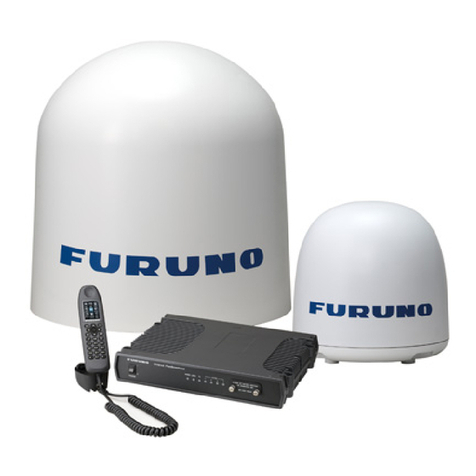
TABLE OF CONTENTS
iv
2.6 LES List ............................................................................................................. 2-18
2.6.1 Adding stations to the LES list................................................................. 2-18
2.6.2 Editing the LES list .................................................................................. 2-20
2.6.3 Printing the LES list................................................................................. 2-21
2.7 Station List ......................................................................................................... 2-22
2.7.1 Adding stations to the station list ............................................................. 2-22
2.7.2 Editing the station list .............................................................................. 2-25
2.7.3 Printing the station list ............................................................................. 2-25
2.8 Entering Own Ship’s Position............................................................................. 2-26
2.9 Setting Directories ............................................................................................. 2-27
2.10 E-mail Service List ............................................................................................. 2-28
2.11 E-mail Setup ...................................................................................................... 2-30
2.12 Network Setup ................................................................................................... 2-31
2.13 Automatic Mode Setup ...................................................................................... 2-33
2.14 Saving, Loading System Settings ....................................................................... 2-34
2.14.1 Saving system settings to a floppy disk................................................... 2-34
2.14.2 Loading system settings to the terminal unit............................................ 2-34
3. FILE OPERATIONS.......................................................................................3-1
3.1 Preparing Files..................................................................................................... 3-1
3.1.1 Preparing a routine file .............................................................................. 3-1
3.1.2 Preparing a confidential file ....................................................................... 3-2
3.1.3 Editor menu setup ..................................................................................... 3-3
3.1.4 Working with text ....................................................................................... 3-4
3.2 Saving Files ......................................................................................................... 3-7
3.2.1 Formatting a floppy disk ............................................................................ 3-7
3.2.2 Saving files................................................................................................ 3-8
3.3 Opening Files .................................................................................................... 3-10
3.3.1 Opening files ........................................................................................... 3-10
3.3.2 Switching between files........................................................................... 3-11
3.3.3 Opening a file when both working areas are occupied ............................ 3-11
3.4 Saving a File Under a New Name...................................................................... 3-12
3.5 Printing Files on Floppy Disks............................................................................ 3-13
3.6 Combining Files................................................................................................. 3-14
3.7 Deleting Files..................................................................................................... 3-14
3.8 MIME (Multipurpose Internet Mail Extensions)................................................... 3-15
3.9 Renaming Files.................................................................................................. 3-16
4. INMARSAT C COMMUNICATIONS ..............................................................4-1
4.1 Transmitting ......................................................................................................... 4-1
4.1.1 Code description ....................................................................................... 4-1
4.1.2 Transmitting a prepared file....................................................................... 4-2
4.1.3 Transmitting a file stored on floppy disk (multiple address) ....................... 4-9
4.1.4 Canceling transmission ........................................................................... 4-13
4.1.5 Confirming delivery status (message status list)......................................4-14
4.1.6 Manually requesting delivery status ........................................................ 4-16
4.1.7 Accessing the 2-digit code services ........................................................4-17
4.1.8 Inserting the destinations of a fax terminal .............................................. 4-19




























